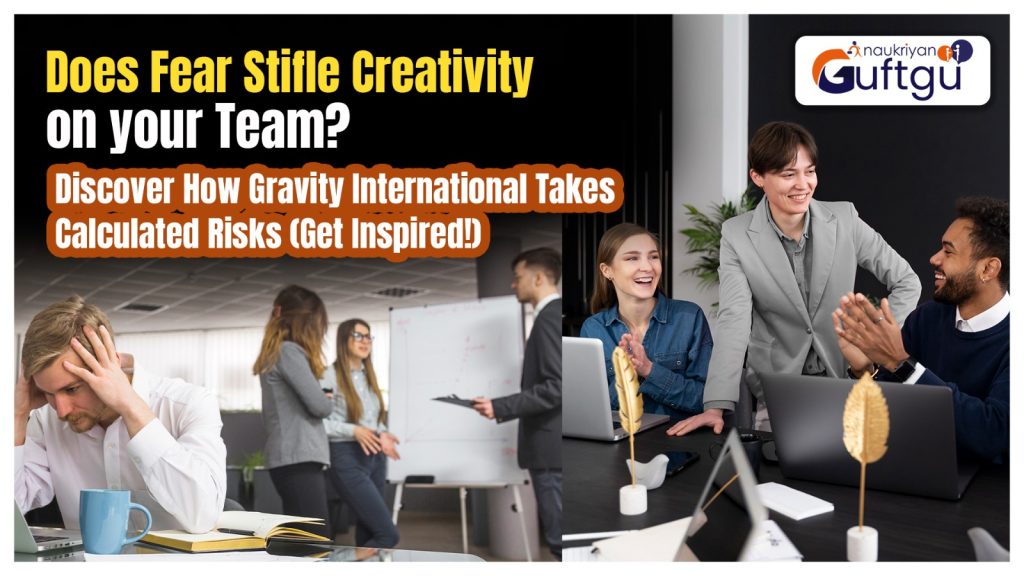Is Fear Stifling Your Team's Creativity? Here's How Gravity International Embraces Calculated Risks

Introduction
The Paradox of Fear and Creativity
In the labyrinth of corporate environments, fear can be a double-edged sword. While it serves as a primitive safeguard, protecting us from danger, it also binds the wings of creativity. Fear, when unchecked, transforms into an invisible shackle that stifles innovation and restricts the flow of groundbreaking ideas. Gravity International, a vanguard in fostering innovation, understands this paradox well. The company has pioneered an approach that not only acknowledges the existence of fear but also transforms it into a catalyst for creativity through calculated risk-taking.
Gravity International’s Innovative Approach
At Gravity International, the ethos of embracing risk is deeply embedded in the organizational culture. Here, risk is not perceived as a perilous leap into the unknown but as a calculated, strategic move that can unlock new potentials. This mindset shift has propelled Gravity International to the forefront of industry innovation, setting a benchmark for others to follow.
Understanding the Fear-Creativity Connection
The Psychology Behind Fear and Its Impact on Creativity
Fear, an inherent human emotion, often triggers a fight-or-flight response. In a corporate setting, however, this response can manifest as aversion to new ideas, reluctance to challenge the status quo, and an overall reduction in creative output. When employees fear failure, ridicule, or retribution, their willingness to propose novel solutions diminishes, and the organization’s creative pulse weakens.
Real-World Examples of Fear Inhibiting Innovation
History is replete with instances where fear has stymied innovation. Consider the case of Kodak, which, despite pioneering digital photography technology, hesitated to embrace it fully for fear of cannibalizing its film business. This hesitation, rooted in fear, ultimately led to the company’s decline. Gravity International, aware of such pitfalls, has developed a counter-narrative that champions calculated risk-taking.
Fostering a Culture of Calculated Risk-Taking
Encouraging Open Dialogue and Idea Sharing
At Gravity International, fostering an environment where open dialogue and idea sharing are the norms is paramount. By encouraging employees to voice their ideas without the dread of immediate dismissal or judgment, the organization creates a fertile ground for innovation. Regular brainstorming sessions, feedback loops, and an inclusive communication policy ensure that every voice is heard and valued.
Implementing Structured Risk Assessment Frameworks
To transform risk into a manageable and productive endeavor, Gravity International employs structured risk assessment frameworks. These frameworks provide a systematic approach to evaluating potential risks and benefits, ensuring that decisions are informed and strategic. By breaking down risks into quantifiable elements, the fear associated with uncertainty is significantly reduced.
Practical Strategies to Overcome Fear
Training and Development Programs
Gravity International invests heavily in training and development programs designed to build confidence and resilience among employees. These programs focus on enhancing problem-solving skills, fostering adaptability, and encouraging a growth mindset. By equipping employees with the tools to handle uncertainty, the company mitigates the paralyzing effects of fear.
Leadership’s Role in Modeling Risk-Taking Behavior
Leaders at Gravity International play a crucial role in setting the tone for risk-taking. By modeling risk-taking behavior themselves, they signal to their teams that it is not only acceptable but also encouraged to venture into uncharted territories. Leadership transparency about past failures and the lessons learned further demystifies the fear of failure, promoting a culture where calculated risks are seen as stepping stones to success.
The Benefits of Embracing Calculated Risks
Enhanced Innovation and Competitive Advantage
The primary benefit of embracing calculated risks is the surge in innovation. When employees feel safe to experiment and propose bold ideas, the organization can pioneer new products, services, and processes that set it apart from competitors. This innovative edge is a critical driver of long-term success and sustainability.
Improved Employee Morale and Engagement
A culture that embraces calculated risks also positively impacts employee morale and engagement. When employees know their ideas are valued and that they can take risks without fear of punitive consequences, their job satisfaction and loyalty increase. This, in turn, leads to higher productivity and a more dynamic, cohesive workforce.
